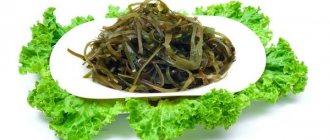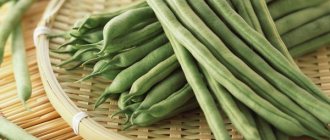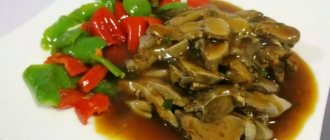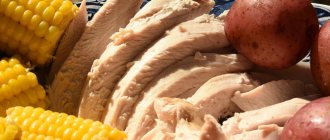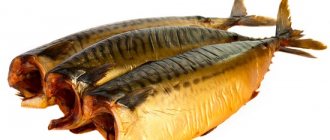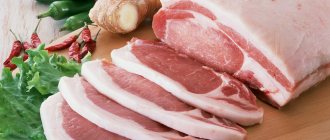02/15/2015 / Vegetables and herbs
| Boiled beans, BZHU and calorie content per 100 g of product | |||
| Calorie content 123 kcal | Proteins 7.8 g | Fat 0.5 g | Carbohydrates 21.5 g |
Beans, like peas, belong to the legume family. The bean is native to Latin America, from where Spanish colonialists brought it to Europe in the Middle Ages. As a rule, this is a climbing plant, but bush varieties are also found. Bean fruits are hard, round seeds hidden in oblong pods. There are many types of beans, which differ in color, shape, and pod length.
Vitamins
Of the fat-soluble vitamins, boiled red Kidney beans contain E and K. Of the water-soluble vitamins, there are vitamins C, B1, B2, B3 (PP), B4, B5, B6 and B9.
>»> >»> >»> >»> >»> >»> >»> >»> >»> >»> >»> >»> >»> >»> >»> >»> >»>
| Vitamins, content | Share of daily value per 100 g | |
| Vitamin A | 0.0 µg | 0,0% |
| Beta carotene | 0.0 µg | 0,0% |
| Alpha carotene | 0.0 µg | 0,0% |
| Vitamin D | 0.0 µg | 0,0% |
| Vitamin D2 | n/a | 0,0% |
| Vitamin D3 | n/a | 0,0% |
| Vitamin E | 0.0 mg | 0,2% |
| Vitamin K | 8.4 mcg | 7,0% |
| Vitamin C | 1.2 mg | 1,3% |
| Vitamin B1 | 0.2 mg | 13,3% |
| Vitamin B2 | 0.1 mg | 4,5% |
| Vitamin B3 | 0.6 mg | 3,6% |
| Vitamin B4 | 30.5 mg | 6,1% |
| Vitamin B5 | 0.2 mg | 4,4% |
| Vitamin B6 | 0.1 mg | 9,2% |
| Vitamin B9 | 130.0 mcg | 32,5% |
| Vitamin B12 | 0.0 µg | 0,0% |
What other benefits are beans?
Those who are losing weight often exclude legumes from their diet - undeservedly! Although they are representatives of high-carbohydrate foods, they still help in getting rid of excess fat reserves.
The benefits of beans are not limited to just their beneficial effects on the digestive system. It helps normalize metabolism, stabilizes blood pressure, and improves heart function. This product is indispensable for people who have a weakened nervous system. “Queen of Legumes” is an effective preventative against tuberculosis.
Mineral composition
The ratio of mineral substances (macro- and microelements) contained in boiled red Kidney beans is presented in the table using diagrams.
>»> >»> >»> >»> >»> >»> >»> >»> >»> >»> >»>
| Minerals, content | Share of daily value per 100 g | |
| Calcium | 35.0 mg | 3,5% |
| Iron | 2.2 mg | 22,2% |
| Magnesium | 42.0 mg | 10,5% |
| Phosphorus | 138.0 mg | 19,7% |
| Potassium | 405.0 mg | 8,6% |
| Sodium | 1.0 mg | 0,1% |
| Zinc | 1.0 mg | 9,1% |
| Copper | 0.2 mg | 24,0% |
| Manganese | 0.4 mg | 18,7% |
| Selenium | 1.1 mcg | 2,0% |
| Fluorine | n/a | 0,0% |
Delicious and healthy recipes
Before you cook beans, remember that legumes go well with vegetables and mushrooms. But it’s better not to combine them with fish and chicken in one meal. For the rest, you can rely on your imagination or use the recipes below.
Lobio with mushrooms. In the evening, soak red beans (1 cup) in plenty of cold water. The next day, boil the beans for 1.5 hours over low heat. Coarsely chop the champignons (250 g) and simmer, adding a small amount of water and garlic (3 cloves) squeezed through a press. In a tablespoon of refined vegetable oil, fry 5 onions, cut into half rings. Coarsely chop the walnuts (50 g). Connect all components together.
Salad "Simple". Prepare beans (white or red) as indicated in the previous recipe. Take 300 g of dry legumes. Cut the onion into half rings, chop a bunch of parsley or cilantro very finely. In a salad bowl, mix all the ingredients, salt and pepper, add 1-2 tbsp. wine vinegar, 2-3 tbsp. olive oil. Stir and let sit for 30-40 minutes.
Casserole "Original". Bring 1 cup of beans to readiness as indicated above.
Fill the bowl (3 tbsp) with 1% kefir (150 ml) and set aside so that the cereal swells. During this time, beat two whites with salt, add soft low-fat cottage cheese (200 g) to the foam, mix. Now combine the egg-curd mass with semolina and beans. Knead until the dough is homogeneous. Grease the baking dish with oil and sprinkle with semolina (if you cook in a silicone form, this is not necessary). Spread the mixture and bake in the oven for 50-60 minutes at a temperature of 160-170 degrees.
Stew. In a bowl with high walls, mix boiled beans (500 g), onions (5 pcs.), carrots (3 pcs.), peeled tomatoes in their own juice (1 can). Salt, pepper, season with bay leaf, cover with a lid or foil and put in the oven for 1.5 hours at 200 degrees. The dish is incredibly tasty both hot and cold.
pohydej-ka.ru
Boiled beans are not as common in European countries as in Central and Latin America, where many national dishes are prepared based on beans. Of the variety of legumes, beans are second only to peas, which have long been present in both daily food and holiday meals. Boiled beans, depending on the type and variety, retain their shape or are boiled soft, have a soft, dense, elastic or oily pulp consistency. Boiled beans should be stored in the refrigerator for no more than 3 days.
Calorie content of boiled beans
The calorie content of boiled beans is 123 kcal per 100 grams of product.
Composition and beneficial properties of boiled beans
Boiled beans are a healthy and practically dietary product, as they have low calorie content and a high content of dietary fiber, the digestion of which takes a lot of energy, that is, the resulting calories are wasted. The vitamin-mineral complex of the product contains: choline, B vitamins (B1, B2, B6,) C, E, PP, as well as potassium, calcium, magnesium, iron, sulfur, iodine, phosphorus and sodium. Boiled beans have a diuretic effect, relieving swelling and helping to stabilize blood pressure (calorizator). The product helps eliminate excess “bad” cholesterol and toxins, and increases the body’s resistance to infectious diseases. The vegetable protein contained in boiled beans is of high quality, but is not completely broken down, causing excess flatulence.
Harm of boiled beans
Boiled beans are not recommended in large quantities for those diagnosed with gout, pancreatitis, colitis and various diseases of the gastrointestinal tract. White beans are less likely than other types to cause flatulence; this should be taken into account when creating a menu.
How to cook beans
Beans are one of the legumes whose seeds should not be eaten raw. Traditionally, dry beans are soaked before cooking to speed up the cooking process. The soaking time ranges from an hour to 8-10 hours. To reduce the symptoms of flatulence, you can soak the beans in an alkaline solution (for example, baking soda) and cook a little longer. After soaking, drain the water, pour cold water over the beans (as a rule, their skin wrinkles, this will disappear during cooking), bring to a boil and cook over medium heat until tender.
www.calorizator.ru
Dietary properties:
How many calories do boiled beans have, what dietary properties they have, all this is very interesting for those who are trying to lead a healthy lifestyle, monitor their health and figure. So we will try to answer these questions in the next article.
Common beans were first mentioned in chronicles in 2000 BC. e. This vegetable was especially popular among the Aztecs and Incas. In Ancient Greece and Rome, beans were used only as a medicinal product. It appeared in Rus' in the 11th century. and immediately became one of my favorite dishes. Currently, more than 150 varieties of beans are known, among which the most famous are common, holly, lima, and adzuki.
Beans are not only healthy and nutritious, but also have a healing effect on the body. Of particular value is the easily digestible protein containing the amino acids tyrosine, lysine and methionine. Its quantity reaches almost 20%, while its quality exceeds that of animal protein. Beans contain fiber, carotene, citric acid, ash substances, vitamins C, PP, A, group B, carotene, magnesium, calcium, zinc, iron, iodine, copper. Bean pods also have beneficial properties and contain starch, sugar, minerals and amino acids.
Canned
Probably the most commonly consumed product in any diet is canned beans. They make soups from it, eat it as a side dish, and take it to their dachas and on hikes. Although it seems that a canned product cannot in any way be dietary, this is more likely to be misleading than true. Canned beans contain only 68 kcal, but a whopping 4.7 grams of protein.
So it is recommended to be added to dietary dishes. And its main advantage is that in the form of canned food it does not require heat treatment, therefore it retains a huge amount of all those useful substances that are contained in still raw beans.
You can eat canned beans without worrying about the extra pounds on your sides. But before consuming the product, you first need to make sure of its quality: there should be no rotten smell, the brine should be cloudy, and the beans themselves should not be broken; their size according to GOST should be from 6 mm to 1 cm in length.
Ingredients of boiled beans:
Vitamins:
| Vitamin: | RR | IN 1 | AT 2 | AT 4 | AT 5 | AT 6 | AT 9 | E |
| in mg. per 100 grams | 6.4 | 0.5 | 0.18 | 0.0 | 1.2 | 0.9 | 0.09 | 0.6 |
Minerals:
| Mineral: | Calcium | Phosphorus | Magnesium | Potassium |
| in mg. per 100 grams | 150 | 480 | 103 | 1100 |
Beans help strengthen blood vessels, cleanse the blood, and normalize heart rate. Vitamin E, a natural antioxidant, strengthens blood vessels and improves heart function. Arginine also has a beneficial effect on the cardiovascular system. The large amount of iron in beans causes an influx of oxygen to blood cells, which affects the production of red blood cells and increases the body's resistance to infections. Beans are used to prepare decoctions for atherosclerosis, stress, nervous exhaustion, kidney disease, rheumatism, pancreatitis, and skin diseases.
Beans are the most important, if not the main, component of vegetarian dietary dishes. It is used in many fasting diets. In cooking, beans are used to prepare soups, main courses, side dishes for fish, vegetable, meat dishes, sauces, casseroles, salads and even desserts.
Principles of any diet
When adhering to any of the diets, you must remember that the diet should be varied. None of the products contain absolutely all the substances the body needs, which means mono-diets can be very dangerous and lead to hypovitaminosis.

Although beans are a very healthy plant, their diet must be followed by adding additional food items. A varied and healthy diet is the key to a healthy body and glowing skin, energy and a satisfied mental state.
Calorie content

How many calories are in beans? Calorie content depends on the type of vegetable and the method of its preparation. Boiled black beans have the highest calorie content; 100 g contains 132 kcal. White varieties are in second place in terms of calorie content: 100 g of boiled product contains 102 kcal. The calorie content of boiled red beans will be 93 kcal/100 grams. Green beans have a very low calorie content - 24 kcal/100 grams.
Roasted vegetables have higher calorie content. So, pods fried in a frying pan with butter will already have a calorie content of 94 kcal/100 grams. The calorie content of fried beans is 123 kcal/100 grams. Calorie content of stewed vegetables:
- beans - 111 kcal/100 g;
- pods - 78 kcal/100 g.
Canned beans also vary in calorie content. The calorie content of beans will be 99 kcal/100 g, the pods - 16 kcal/100 g. The calorie content of 100 g of beans canned in tomato sauce is 102 kcal. The calorie content of 100 g of frozen legume vegetable is 28 kcal.
Harm from beans
Frequent consumption of beans is harmful for:
- elderly people;
- toddlers;
- people with intestinal and stomach diseases.
Since the breakdown of individual substances contained in beans produces uric acid, its use is not recommended for patients with rheumatism, joint pathologies, pyelonephritis, and cholecystitis.
A reasonable approach to nutrition will allow you to receive only the benefits of such a valuable product as beans.
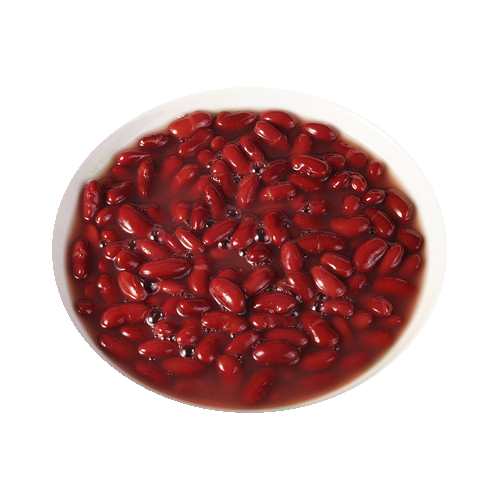
Harm and contraindications
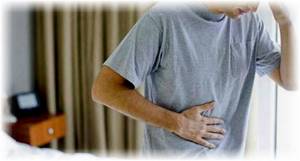
Beans can harm the body in the following cases. It contains toxic elements that are destroyed under the influence of high temperatures. The product should not be eaten raw. Heat treatment should last at least 10-15 minutes. Red beans are the most toxic.
The product causes excessive gas formation. To eliminate this drawback, the beans need to be soaked before cooking. Substances that cause digestive problems will dissolve in water. In addition, the duration of the cooking process will be reduced.
Beans are contraindicated in the following cases:
- cholecystitis and colitis in acute stages;
- exacerbation of stomach ulcers;
- pancreatitis.
Due to the high content of purines, it should not be used by patients with gout or nephritis. In case of severe liver damage, it is necessary to limit the use of the product, since excessive gas formation burdens the organ. The consumption of this vegetable should be limited to older people; this need is associated with age-related changes in the gastrointestinal tract.
So, thanks to its chemical composition, beans are a unique product that can compete with meat and fish in terms of nutritional value. It is combined with many components of the daily diet, which allows you to prepare many healthy dishes. Low calorie content makes the vegetable indispensable for those who want to lose weight. Since beans contain a large amount of protein, they are necessary for those whose activities are accompanied by increased physical activity.
Special tips on how to properly eat white beans
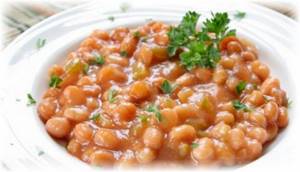
For all its “healthy splendor,” white beans require proper preparation. Otherwise, you can get poisoned from boiled beans.
Required preparation conditions:
- Since fresh beans are bitter, they are soaked before cooking.
- When using a canned product, drain the liquid from the can and rinse the beans.
- Change as much water as possible when soaking.
- The time it takes to cook beans depends on their quality.
- The beans are not stirred during cooking.
- Salt the dish after finishing the cooking process.
What the product is served with:
- Vegetables rich in vitamin C are good.
- Cold appetizers will be served impressively, where red beans will be next to white beans. It is better not to use a canned product here.
- It is possible to combine beans with tomatoes, cucumbers, cheese and chicken.
Benefits for diabetics
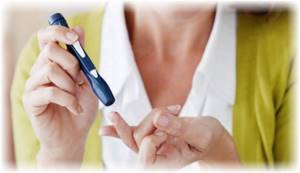
Doctors and nutritionists unanimously note the beneficial properties of white beans for diabetes. The minimum caloric content of food, ease of digestion and zero effect on sugar levels make beans an excellent source of all the necessary nutrients for patients. No matter how much you eat such food, weight gain and cholesterol levels do not increase.
Beneficial substances such as arginine, potassium, magnesium and the B group of vitamins normalize the condition of blood vessels and participate in the formation of new blood, which also remains vital for diabetes. Antibacterial substances activate regeneration processes in all organs, accelerating the healing of wounds, ulcers and cracks in the skin.
Red and black beans have the same properties. You can include the product in the weekly menu 2-3 times, about a cut glass at a time. To prevent excess gas formation in patients with diabetes, before cooking, the beans are soaked for approximately 2 hours in a soda solution (add no more than a pinch).
Restrictions on use
Like any representative of beans, the white subspecies is seriously bitter. Why does this happen fresh? The plant “warns” that its green fruits are poisonous and require mandatory heat treatment after harvesting.
It is very important how long the beans are cooked. Only with prolonged heat treatment are all toxic substances removed from the composition
Some housewives are perplexed why their beans are bitter even after prolonged cooking? In this case, professional chefs advise discarding the product to avoid serious poisoning. The beneficial properties of such fruits have clearly been lost, but the toxic substances have been preserved for various reasons.
Other restrictions on eating white beans are associated with various diseases, in which not only the calorie content of the product is important, but also the extent of its effect on the body. Diseases and conditions that limit the consumption of white beans: old age, gout, exacerbation of diseases of the stomach, pancreas, and kidneys. How much beans a diabetic can eat should be decided by his doctor. The low calorie content of a product is not a reason for its uncontrolled absorption.
Taste qualities of beans
Later, in addition to its decorative function, humanity discovered that it also tastes great. Growing beans began to generate income. Most people have begun, increasingly, to use it as food and add it to various dishes. A modern person who adheres to the principles of a healthy diet practically cannot imagine life without this plant.
Unripe bean seeds are often eaten. They have a delicate taste and are also a source of many vitamins and other beneficial substances. To maintain good, good health, it is necessary to periodically eat these fruits. Moreover, it can be prepared in completely different ways.
Cooking white beans
One of the most common Lenten dishes is white beans. The benefits and harms of this product have been known for a long time. Their wide study makes it possible to include the fruits of this legume in the diet of almost every person without harming his health.
Features of cooking white beans
In order to get rid of toxins contained in the raw product, it is necessary to soak the beans in cold water 10-12 hours before cooking. Please note that during cooking, after the first boil, you must drain the water. There is no need to salt the broth. Bean-based dishes are sprinkled with salt after they are fully cooked. It is best to prepare this product in a large amount of water. In order to avoid turning the fruit into porridge, it is recommended not to stir.
What to eat white beans with?
White beans are a unique product that goes well with both meat and other vegetables. However, nutritionists, for better protein absorption, recommend supplementing your diet with foods high in vitamin C, such as green peas, radishes, Brussels sprouts, cucumbers, beets, pumpkin and carrots. The best meat product to choose is beef liver.
Please note that all types of beans are perfectly combined with each other. This feature should be taken into account when preparing salads, which will help improve both the taste and external qualities of the dish.
Lenten tomato-bean soup
Tomato and bean soup will help you diversify your lean diet. It is quite simple to prepare. It contains the following ingredients:
- Canned white beans – 1 can;
- Tomatoes in their own juice – 1 can;
- Onion - 1 piece;
- Carrots – 1 piece;
- Coriander – 1 bunch;
- Garlic – 2 small heads;
- Water – 2.5 liters;
- Spices - to taste.
We start cooking by preparing the vegetables. To do this, peel the onions, garlic and carrots and chop them finely. Place the resulting pieces in a frying pan with hot oil. Fry the chopped vegetables until golden brown. Then chop the tomatoes and pour them into the pan. Simmer the resulting mixture over low heat for 10 minutes. After this time, place the fried vegetables in a deep pan and add beans to them. After this, pour the resulting mass with cold water and bring to a boil. After boiling, reduce the heat and cook for another 15 minutes. After cooking, add salt and spices to our tomato-bean soup.
One of the most popular dietary foods is white beans. The benefits and harms of this legume plant were discussed in detail in this article. When properly prepared, it is an indispensable product in terms of its nutritional properties. It is especially useful for people who have given up eating meat. White beans contain a large amount of vitamins and minerals. But do not forget about contraindications to its use.
Beans. Contraindications for use
Like most foods, beans are beneficial and harmful at the same time. Although there are much fewer contraindications to the use of this product than recommendations for its use.
Beans are not recommended for consumption by older people, those with peptic ulcers, gout, gastritis, colitis, cholecystitis, or those suffering from high acidity. Do not neglect the recommendations of experts who warn against eating beans raw, as this can cause serious poisoning.
It is a known fact that eating beans can lead to increased gas formation (flatulence). But this unpleasant effect can be significantly reduced if the beans are pre-soaked in a soda solution and subjected to longer heat treatment. In order to reduce gas formation, when preparing beans it is also worth using various spices that prevent flatulence, for example, dill. Typically, white beans cause less gas than red beans.
There are different types of beans...
Cooking methods
Raw beans contain toxic substances that can poison an unprepared body. Therefore, it is strictly recommended to soak the beans before cooking and then cook them for at least 10 minutes. Beans are fried, stewed, boiled. But to keep the calorie content low, it is best to stew the beans, bake them, or cook them as a side dish. It can also be cooked with an egg: baked beans with egg contain only about 100 kcal, fried - about 120 kcal. The calorie content of beans boiled in water is only 100 kcal.

Typically, heat treatment destroys most of the vitamins, but in the case of legumes, about 70-80 percent of the beneficial substances remain. If you want to get all the vitamins and minerals, you can eat canned beans. It comes regular and with tomato sauce. The latter contains 92 kcal, which is quite a bit for a tasty dinner.
Beans, by the way, are easy to cook in a slow cooker. It goes well with rice and can be a substitute for meat in dishes such as pilaf, porridge, and soups. Canned beans can also be cooked: they are fried and added to soups, stewed with meat and other side dishes.



